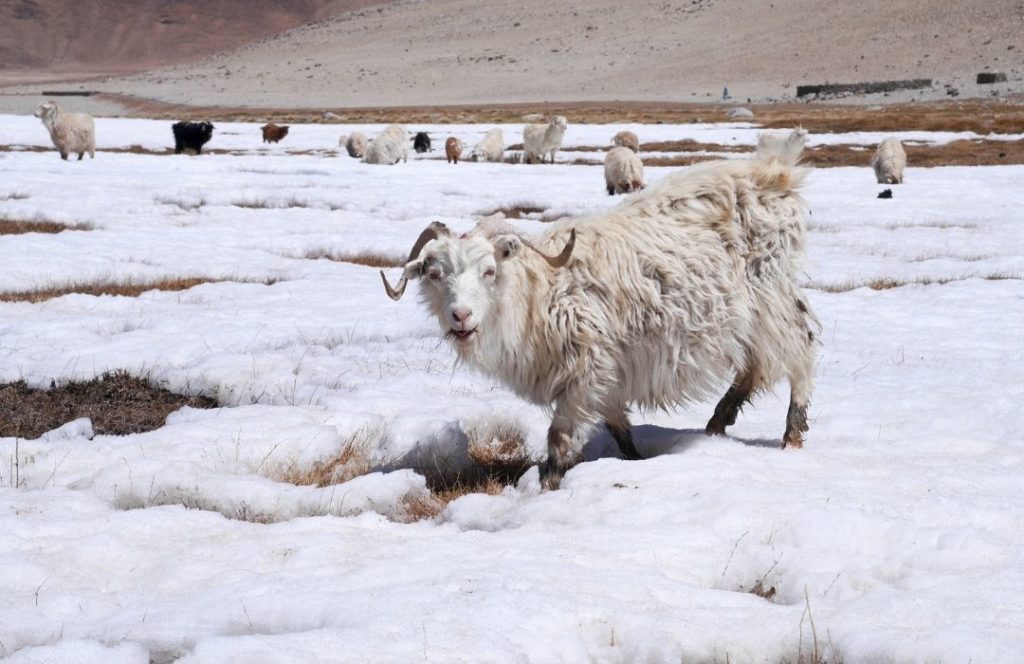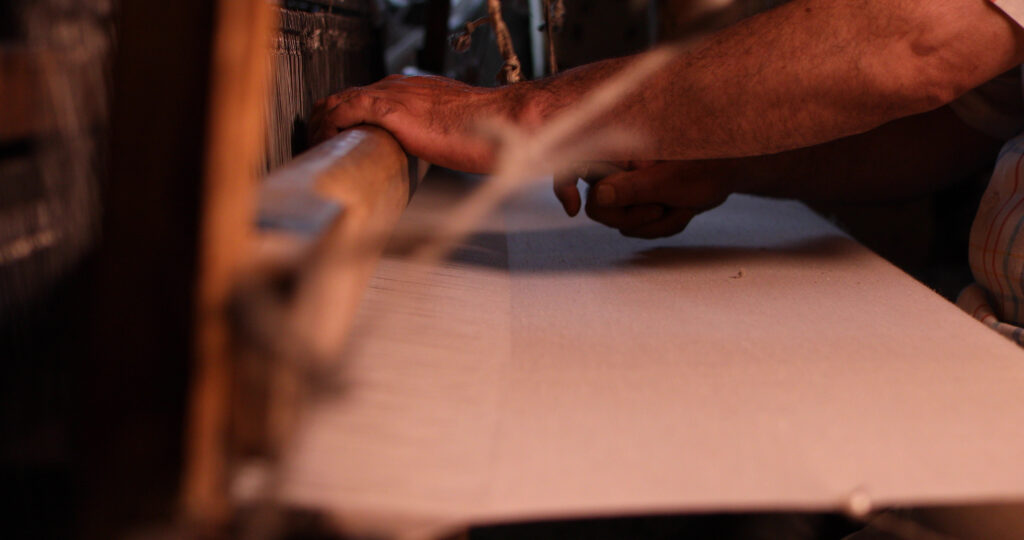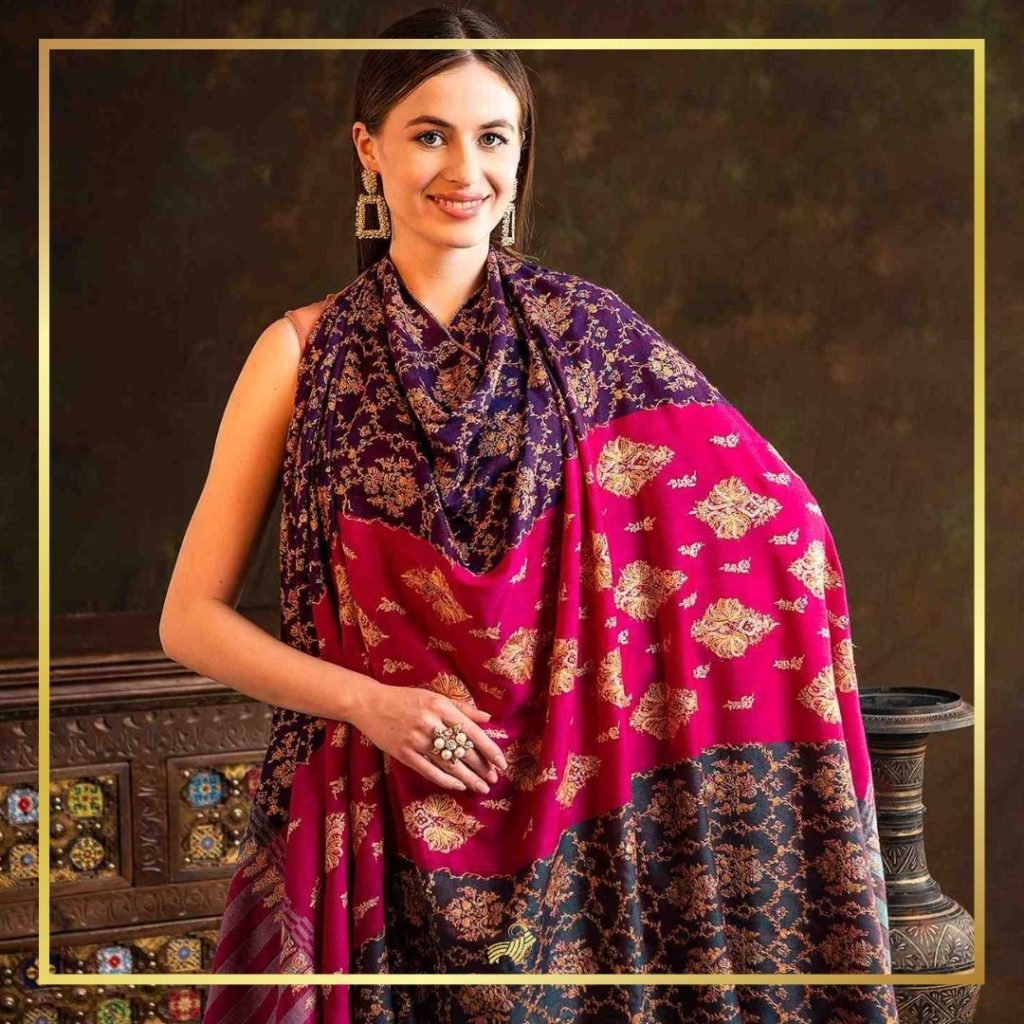Kashmiris have always had a great reputation as skilled craftsmen. This community was one that was the most revered and celebrated around the world for its proficiency. These artisans impressed Europeans much, and the entire world too, with the handcrafted objects they created. One of them was the Kashmiri shawl, which came to the notice of the world in the late 18th and 19th centuries. Kashmiri shawls were uniquely crafted. These used fine animal hair which when processed, gave lightweight, warm and sumptuous shawls. They first became truly loved by the local Mughal rulers, but soon spread their wings across nations, especially when Empress Josephine of France wore one and owned hundreds.
With large quantities of exports, the economy of Kashmir grew. Up to this day, Kashmiris attribute their ancient economic well-being to the sales of Kashmiri handicrafts, the prime of these being handcrafted shawls. For this reason, Kashmiri shawls aren't just a warm wrap accessory for women, but something to be revered and honoured.
With a huge clientele and admiration, Kashmiri shawls grew adoration as well as many questions on its origin and making. So today, we assembled ten important questions on Kashmiri shawls, and let our experts answer them for those who still do not have enough knowledge about the same.
Q1: What are Kashmiri Shawls?
Shawls crafted in Kashmir are broadly categorised into three categories on the basis of the raw material used to make them. The finest, most warm, and the most expensive shawls are shahtoosh shawls, which are made from the hair of Tibetan antelope. These animals grow fine hair to survive the freezing cold of their habitat. But unfortunately, the Tibetan antelope has to be killed in order to acquire its hair. And hence, Shahtoosh trading is banned all over the world. The Shahtoosh fibre on spinning would yield yarn of just 7 to 10 microns in diameter, which is magically fine.

The next category is the Pashmina shawls, which are crafted from Cashmere wool found in Ladakh. The Cashmere goat loses its hair in the Spring season, which the herders collect and get processed manually in Kashmir. Pashmina shawls are immensely soft, smooth, warm, and lightweight.
The third category is the simple sheep wool shawls called Raffal shawls. Raffal shawls are used for casual occasions, while Pashmina shawls are worn by women for weddings and special events.
It is Pashmina shawls that are used synonymously with Kashmiri shawls. The reason is that Shahtoosh is banned, and Raffal shawls aren't too famous around the world because of a generic and “not so special” quality. Even though Raffal shawls serve a number of purposes for the locals, it is the charm of Pashmina shawls that has got the world fascinated.
Q2: How are Kashmiri Shawls made?

Call them Kashmiri shawls or Pashmina shawls, these are handcrafted by artisans of the valley for a few months or sometimes years. Fine Cashmere grows on the body of a rare goat, inhabiting the Himalayan region. This is collected during the moulting period and sent for processing to Kashmir. In Kashmir, artisans clean, spin and weave it, all manually. This is how one Kashmiri shawl is prepared. It can be later embroidered, printed, laced, or adorned in any way.
Also read: Which country has the best Cashmere?
Q3: Who introduced shawls in Kashmir?
A Persian saint, by the name of Mir Syed Ali Hamdan, was the first person to discover Cashmere in Ladakh. He ordered its herders to gently comb it off the body of the goat, and process it. It was processed into a pair of socks and presented to the then king Zain ul Abideen. The king was highly fascinated and satisfied with its high quality. He immediately ordered processing units to be set up for handcrafting shawls. Hence it was king Zain ul Abideen, who lay the foundation of Kashmiri shawls in Kashmir.
Q4: How much time does it take to craft Kashmiri Shawl?
This completely depends on the type of shawl, the amount of embroidery, and the weave on the shawl. If the shawl has to be solid, it will take just 3 to 4 days to weave it. Weaving takes time as the spun thread is always ready. If the shawl has to be embroidered lightly, it might take a few months. Jamawar shawls, which are embroidered in such a way that the base is not visible, take up to 5 years to complete. The same is the case with a Kani Jamawar shawl, which takes 4 to 5 years to complete.
Q5: Why is Kashmiri shawl so popular?

Kashmiri shawls are popular all over the world for a number of reasons. Firstly, these are one of the warmest accessories in the world. Kashmiri shawls made from Cashmere are 8 times warmer than sheep wool. As far as softness is concerned, these shawls are heavenly soft and fine. Know that Cashmere fibre on spinning becomes just 12 to 16 microns in diameter. This makes Cashmere shawls fine, soft, and lightweight. These shawls, when embroidered, look heavenly graceful and elegant, and this is the reason why Europeans chose them over thousand other options from across the world.
Q6: What embroideries are done on Pashmina shawls?
Kashmiri shawls are adorned with hand embroideries, as the strain of a machine can tear through the shawls. There are three main embroidery patterns that a Pashmina shawl of Kashmir hosts.
- Sozni embroidery: This is a fine thread and needle embroidery, where light wool or silk threads are used to hand embroider a shawl. All the colours in the world are used, and large and small motifs are embroidered all over the shawl or just its borders. Sozni embroidery can be done profusely in a shawl, because it is lightweight, and a shawl can hold any weight of these fine threads.
- Papier Mache embroidery: This type of embroidery uses thicker threads as compared to sozni ones. The threads are brilliantly coloured and look exceptionally beautiful when hosted by pastel coloured shawls. Paper Mache embroidery is done profusely over shawls, and it is fine and gentle on the base. It has been named Paper mache, after the craft of Paper mache (where decorative and utility items are made out of paper), as the designs look similar.
- Tilla Dozi: Tilla dozi used metallic threads dipped in gold or silver to adorn the gossamer base of Kashmiri shawls. Tilla was only afforded by the rich and influential some years back, as the threads would be pure gold and silver. But to make these shawls affordable for the masses, artisans used metal, which gave the same magnificent effect, without being much expensive. Tilla is done over Kashmiri Pashmina in small quantities, as the base is light and can tear because of metallic threads passing through.